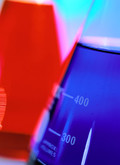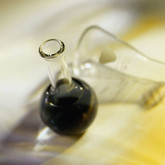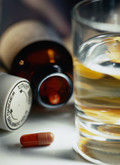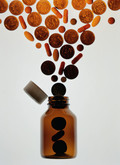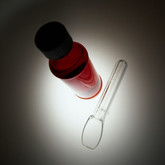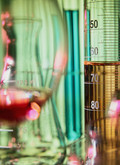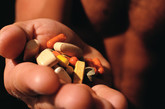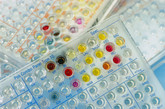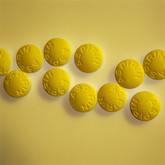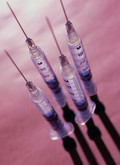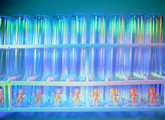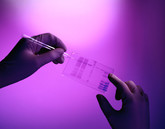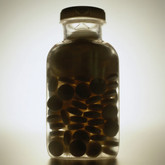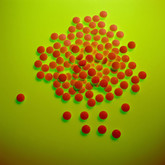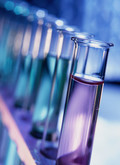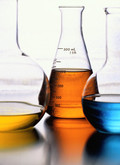Biosimilars/Research
US biosimilars law may prove a barrier to entry for biosimilars
One of the main barriers to biosimilar entry in the US is the US biosimilars law [1]. While some have questioned whether the biosimilars pathway in the US will ever be used [2, 3], others believe that, although flawed, the US biosimilars pathway is likely to become a functioning legal pathway [4].
Brand-name statins costing healthcare system US$6.7 billion
Researchers at Mount Sinai School of Medicine, New York, USA, found that physicians prescribing unnecessary treatments or diagnostic tests, spanning a broad range of clinical conditions, costs the US healthcare system an extra US$6.7 billion annually. The findings, published in Archives of Internal Medicine, attributed prescribing of brand-name statins instead of generic statins as accounting for most of the excess cost [1].
Biotech pipeline and biosimilars
There are more than 200 new biotechnology products in the pipeline (phase II to registered), all of which could be future targets for biosimilars. However, around 60% of these products concern mechanisms of action that are already available, see Figure 1 [1].
Biosimilars or biobetters–what does the future hold
Biosuperiors or biobetters are improvements to originator biological molecules, whereas biosimilars are structural imitations of the originator. But how will the pharma industry choose to pursue this lucrative market and benefit from patent expirations on biologicals? Will biobetters or biosimilars be the winners?
How profitable will biosimilars be
The profitability of biosimilars remains an open question. Five years after launch it is thought that most biosimilars markets will look similar to generics markets (70% penetration, 25% of brand-name drug price) but also that a ‘brand-like’ market with lower price attrition and market share is possible [1].
US$54 billion worth of biosimilar patents expiring before 2020
By 2020 biological products with sales of around US$23 billion in the EU and US$29 billion in the US are expected to be exposed to biosimilar competition [1].
Biosimilars: barriers to entry and profitability in the EU and US
The implications of the US biosimilars law and the pending patent expiries of the 12 major biological products in the EU and the US will have an impact on the profitability and viability of the biosimilars industry [1].
EMA biosimilar regulation should include complex biologicals
The EMA’s comprehensive biosimilar regulatory pathway, which includes the need for new clinical trials and comparability studies that demonstrate quality, efficacy, and safety, should be expanded to include complex biologicals, according to innovation researchers at Utrecht University, Utrecht, The Netherlands [1].
The biosimilars landscape
There is obviously a market for biosimilars. This is driven by the cost savings to be made by payers and patients alike. By 2015, IMS Health (IMS) expects spending on biosimilars to exceed US$2 billion annually, or about 1% of total global spending on biologicals. They expect new biosimilars to enter the US market by 2014 and European markets to have additional biosimilar molecules introduced during this period [1].
EMA comparability studies limiting biosimilar success
The EMA’s comprehensive biosimilar regulatory pathway, which includes the need for new clinical trials and comparability studies that demonstrate quality, efficacy, and safety, is a barrier for the development of clinically superior compounds, according to innovation researchers at Utrecht University, Utrecht, The Netherlands [1].
The market for global and European biosimilars
Due to expiring patents for brand name products, cheaper generics are expected to grab market share [1]. This is not surprising due to the list of blockbuster drugs losing their patent protection in 2011 and 2012. These include the world’s best-selling drug, Lipitor (atorvastatin), which in 2010 had almost US$13 billion in worldwide sales, accounting for 15.8% of Pfizer’s total revenue [2].
Biosimilars and the pharmaceutical industry
IMS Health predicts a slowing down of the growth in annual spending on medicines, with generics being one of the main contributing factors for this reduction.
Development of biosimilars
Costs and risk reduction are facilitating product development of biosimilars [1].
Standards for biosimilars or ‘alternative’ biologicals in India
In the highly regulated market of the EU clear and rigorous guidelines exist for approval of biosimilars. In the EU biosimilars must ensure the same quality, safety and efficacy, as any other product, along with demonstrating biosimilarity (comparability) with the reference product.
Immunogenicity of biosimilar low molecular weight heparins
In a presentation by Professor JM Walenga and colleagues from the Loyola University Medical Center, Illinois,USA, 'immunogenicity issues faced by biosimilar low molecular weight heparins (LMWHs)' were discussed [1].
Timing of the launch of biosimilars in Europe
When and where to launch a new biosimilar to ensure that its uptake is the most effective throughout Europe is an issue that affects all pharmaceutical companies working on biosimilars [1].
Challenges ahead for biosimilar development
Biosimilars, it seems are here to stay, but there is still some way to go before they become commonplace. There is also concern over the associated costs for biological medicines. The cost of biotech therapies is expected to steadily grow by about 30% (an approximately 20 fold increase in 10 years) by 2016.
How cheap will biosimilars need to be
What level of discounts will biosimilars need to provide to be competitive? Some believe that biosimilars will need to provide substantial discounts, being priced as low as 25%, and not 75%, of the originator price [1].
Biosimilar regulatory issues
In Europe, the regulatory frameworks for biosimilars are largely established, with both general guidelines and product specific guidelines put in place by the EMA, covering human insulin, somatropin, human growth hormone, erythropoietin, interferon-alpha, low molecular weight heparin and monoclonal antibody. The agency is also currently working on draft guidelines for a number of other product class specific guidelines, including interferon-beta and follicle stimulation hormone.
Manufacturing of biosimilars
Manufacturing of biosimilars is more challenging than the traditional small molecule generics. Some of the reasons are:
- Investments (including operating costs) associated with manufacturing of biosimilars along with the risk of failure for biosimilars are significantly higher than that for small molecule generics. This results in a relatively smaller discount for biosimilars compared to small molecule generics.
- Minor changes in manufacturing process can cause significant changes in efficacy or immunogenicity.
- Biosimilars are larger and more complex molecules to manufacture.
